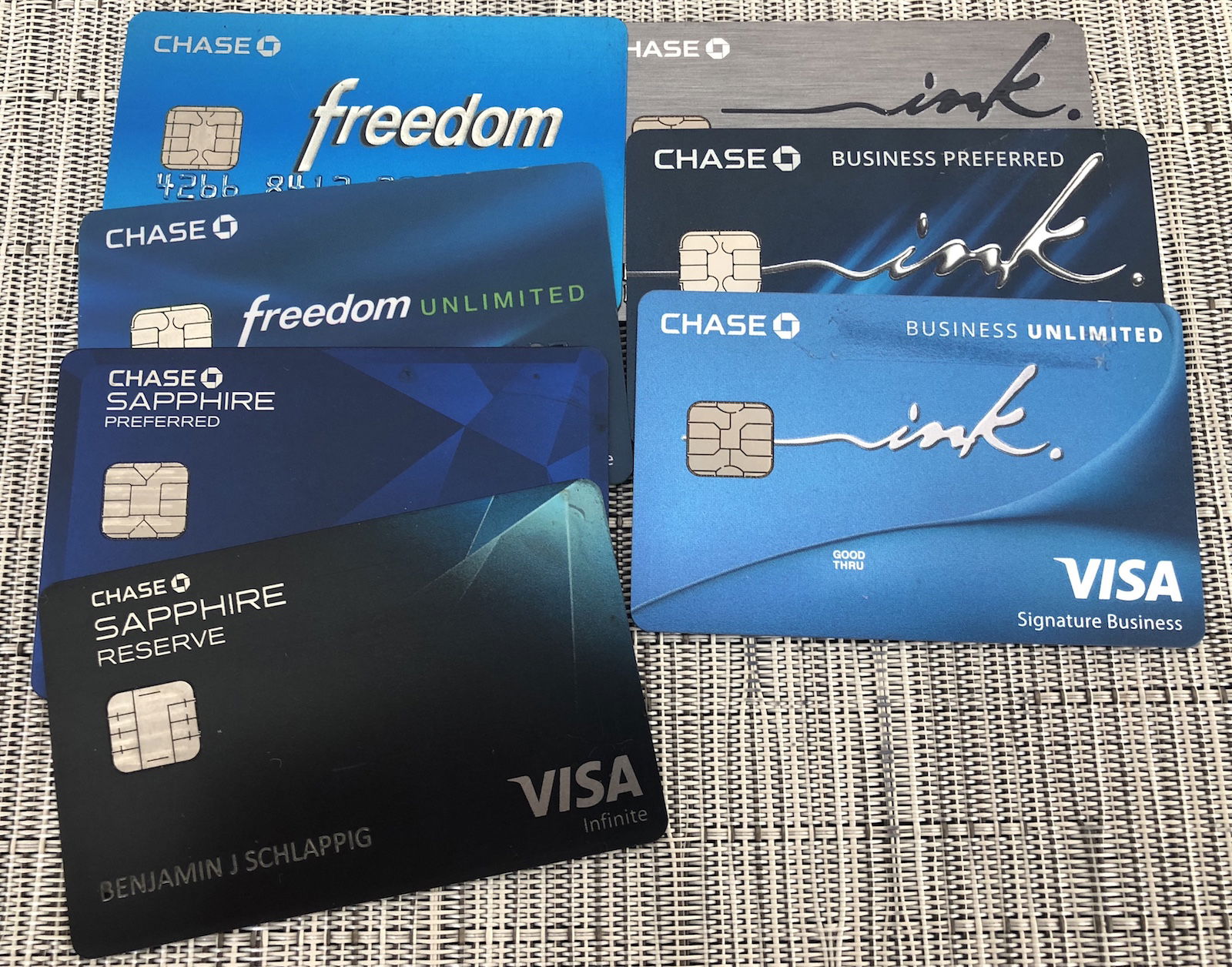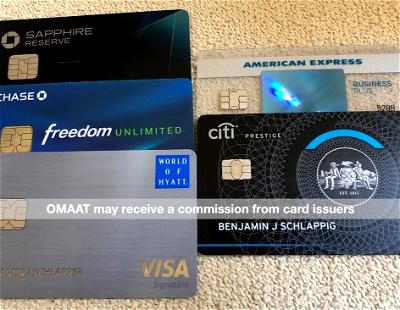I spend a lot of time on the blog talking about applying for credit cards, though that’s potentially not the only way that you can acquire a credit card that might be on your radar.
In this post, I wanted to talk about another method for doing so, which is product changing your credit card. More specifically, I wanted to focus on “downgrading” to another credit card, which can be a way to reduce the annual fees you’re paying on cards.
In this post:
Credit card downgrade & product change basics
The concept is pretty simple. Sometimes you may find yourself in a situation where you have a credit card that you no longer want. In those cases, you can either cancel that card, or you could try to product change it to another card.
“Downgrading” a card typically refers to trading in a card with an annual fee for a card with a lower (or no) annual fee. Similarly, you could also “upgrade” a card from a lower (or no) annual fee card to a premium card, though there are fewer situations where that makes sense.
Product changing a credit card is a win-win, as it lets you maintain a credit card, along with your credit line, without having to apply for a new card.
Over time the concept of downgrading credit cards has become increasingly more valuable, as card issuers have added restrictions to getting approved for cards, like Chase’s 5/24 rule. This means that it might be tough to directly get approved for a card, while product changing may be much more practical.
Credit card downgrade & product change FAQs
With a basic explanation out of the way, let’s talk about some of the logistics and frequently asked questions associated with downgrading and product changing credit cards. In no particular order…
Do you get the welcome bonus if you product change a credit card?
You typically don’t get the welcome bonus on a credit card if you’re getting it through a product change. By doing a product change you’re forgoing the welcome bonus on a card.
However, credit card companies do often have upgrade offers on cards, so if you wanted to switch from a basic card to a premium card, there is sometimes a bonus.
Typically it’s not as good as the bonus would be if you’re applying for a card without a product change (though at the same time there’s also no credit inquiry this way). Everyone has to decide for themselves which offer makes more sense.
To see what kind of offers are available for a product change you can either log into your credit card online account and see if there are any offers, or you can phone up the credit card company.

When can you product change a credit card?
You can usually product change a card if you’ve had it for at least 12 months. Typically you’re not allowed to product change a card within the first 12 months of being a cardmember.
What happens to your credit history and credit line if you downgrade a credit card?
When you downgrade your credit card you typically maintain your credit line and credit history, which is good for your credit score. This can be useful for a variety of reasons:
- Having available credit can be key to minimizing your credit utilization, which is good for your credit score
- A major factor in your credit score is your average age of accounts, and that’s positively impacted by keeping credit cards for a long time; downgrading a credit card wouldn’t count as “closing” it for these purposes
What credit cards can you downgrade to?
This isn’t always so straightforward. In other words, you can’t just product change a card to any other card from the same issuer. Typically:
- You can often only downgrade to another card in the same “family” of cards
- You can only downgrade a personal card to another personal card, and a business card to another business card
- You can only downgrade a credit card to a credit card, and a charge card to a charge card
The only way to know for sure which cards you can product change to is by calling the issuer and asking what’s available for your account, or by looking in your account online (though that ordinarily shows upgrade offers, rather than downgrade offers).
You can often expect that if you’ve had a card for at least a year you can downgrade to another card in the same “family” of cards.

What happens to your credit card rewards when you downgrade a credit card?
This is something you’ll want to ask your card issuer about when you downgrade, because the answer varies based on the situation. You typically maintain your rewards when you downgrade a card. That being said, the value of the points could change. For example:
- Generally if you have an airline or hotel credit card, you’d maintain your rewards as usual, even if you downgrade the card; that’s because the points are stored directly with the airline or hotel loyalty program, rather than with the credit card company
- If you’re earning a transferable points currency you’d often also keep your points, though the redemption value of them may change; many transferable points give you more redemption options the more premium your card is, so see my posts that cover this about Amex Membership Rewards, Capital One, Chase Ultimate Rewards, and Citi ThankYou

When does it make sense to downgrade a credit card?
If you don’t want a card anymore, I don’t always recommend downgrading. Sometimes it makes more sense to just cancel a card. There’s no reason to have “dead weight” in your wallet.
To me there are a few main circumstances under which you should downgrade a card rather than canceling it outright:
- If you’ve had a card for a really long time it might make sense to downgrade it rather than canceling it, since average age of accounts is an important factor in your credit score, and you can preserve that history by downgrading rather than canceling a card
- If there’s a card you can downgrade to that offers you actual perks you’d get value out of, it could make sense to downgrade to it; however, you’re best off doing this when you don’t think it’s worth applying for the card directly, either because you’re not eligible for the card, or because you don’t think it’s worth the inquiry
- If you’re still fairly new to credit cards and have a limited credit history, it could be worth trying to preserve your available credit for a while, and therefore might be worth holding onto a no annual fee card
What are some examples of credit card downgrades?
If the above is too complicated or doesn’t fully make sense, let me give some examples of when it could make sense to downgrade a credit card.
For example, say you have the Chase Sapphire Preferred® Card (review) and Ink Business Preferred® Credit Card (review), and decide you no longer want one of those cards, because both carry annual fees. Rather than canceling one of the cards outright you could potentially:
- Downgrade the Sapphire Preferred to either the Chase Freedom FlexSM (review) or Chase Freedom Unlimited® (review), both of which have no annual fees and potentially offer 1.5-5x points per dollar spent
- Downgrade the Ink Preferred to either the Ink Business Cash® Credit Card (review) or Ink Business Unlimited® Credit Card (review), which also both have no annual fees and potentially offer 1.5-5x points per dollar spent
This would be an excellent option since the cards have no annual fees, have great bonus categories, and this would allow you to get the cards even if you’re over the 5/24 limit.
That’s just one example where something like this could make sense.

Preserving Ultimate Rewards points when downgrading cards
I get a lot of questions about the logistics of upgrading and downgrading cards that can potentially earn Chase Ultimate Rewards points. That’s because both the redemption value and ability to transfer points vary based on which Ultimate Rewards card you have.
For example, sometimes readers have the Chase Sapphire Preferred® Card and want to downgrade it to the Chase Freedom Unlimited®, and then apply for the Chase Sapphire Reserve® Card (the order of this is important, since you can’t be approved for the Reserve if you currently have the Preferred, or have received a new cardmember bonus on it in the past 24 months).
The question is what happens to your Ultimate Rewards points when you downgrade to the Freedom Unlimited, since you won’t have a card that earns “full” Ultimate Rewards points anymore. The good news is that the process is easy. Let’s use the above scenario as an example:
- When you convert your Sapphire Preferred to the Freedom Unlimited, your points will automatically be transferred over; however, those points will no longer be “full” Ultimate Rewards points, but rather will be points that can be redeemed for one cent cash back
- Once you apply for the Sapphire Reserve (or whatever other card earns Ultimate Rewards points), you can then transfer those points back to the card, and they will once again become “full” Ultimate Rewards points
If you have multiple cards you’re canceling, just make sure you first transfer the points to a card that you’re keeping or a card that you’re directly product changing.
When you do this you’ll temporarily not have access to the full potential of the points, but that problem will be solved once you again open the card that earns Ultimate Rewards points. It really is a very straightforward process.

Bottom line
If you’re not happy with a card you have and are considering canceling it, always make sure you first figure out the product change options available for you. It’s not always worth doing, though there are circumstances where it’s a great option.
If you’ve had a credit card for a long time it could make sense to downgrade it rather than canceling it, so you can maintain the credit history. But beyond that, it can also help you maximize your rewards by product changing to cards that add value to your portfolio, but that you may not otherwise apply for directly.
If you’ve product changed or downgraded a credit card, what was your experience like?




We downgraded Chase Sapphire Preferred to Flex. Didn't know the points could not be transferred to airline partners. Might not have done that.
Wanted to downgraded Amex Platinum personal card, but transferring to a no fee card required a new application, so downgraded to green. We have a Business Platinum and it made more sense (cheaper) to add authorized users to that instead of the higher fee, coupon clipping and restricted lounge access coming.
I'm...
We downgraded Chase Sapphire Preferred to Flex. Didn't know the points could not be transferred to airline partners. Might not have done that.
Wanted to downgraded Amex Platinum personal card, but transferring to a no fee card required a new application, so downgraded to green. We have a Business Platinum and it made more sense (cheaper) to add authorized users to that instead of the higher fee, coupon clipping and restricted lounge access coming.
I'm not sure the non-branded cards have the same value as, for instance, the AA world elite Citi card. We consistently get three 120K RT Business class tickets booking 11 months out. For transfers, we have 600K points stranded at Cathay Pacific from a canceled Australia trip (the Cathay flights booked using AA miles were redeposited and burned). Cathay miles can be used on QR, but partners can be hard to book.
Apply for another CSP or CSR or Ink.
I don't know how your logic is but in terms of authorizes users. It's cheaper to add authorize users to the personal Platinum card than the business Platinum card.
Just my 2 cents.
-Don't be afraid to pay annual fees.
-Don't be afraid to apply to more cards.
Don't proactively ask for a downgrade. Let them offer it to you as a way to avoid canceling. But first, try to get that retention bonus, which is often worth more than the annual fee. It's pretty easy to get a retention offer from Amex, but you can do it only once every other year. I don't even both to ask for retention offers from some other card issuers.
@Lucky, I'd appreciate an article...
Don't proactively ask for a downgrade. Let them offer it to you as a way to avoid canceling. But first, try to get that retention bonus, which is often worth more than the annual fee. It's pretty easy to get a retention offer from Amex, but you can do it only once every other year. I don't even both to ask for retention offers from some other card issuers.
@Lucky, I'd appreciate an article about retention offers and which credit card companies are better about offering them.
I have never been offered a retention bonus by Amex other than relatively minor points for extra spend. Most of the time they readily offer to cancel the card if I am not happy with the annual fee or benefits.
Another consideration before downgrading from a premium card is to maximize benefits as far as possible; e.g. using $300 annual travel credit on Sapphire Reserve, using $200 airline (incidentals) credit on Platinum, etc.
Also, in some instances a portion of the fee on your premium card can be prorated & refunded as a credit to your downgraded account.